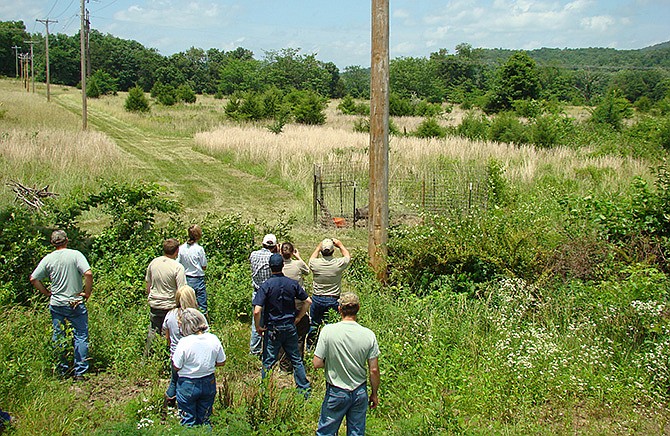Christopher Columbus is to blame for starting the feral hog problem in North America. That's how old of a problem wild pigs are.
When the earliest European explorers came to the Americas, they didn't know what they'd find for food, so they brought some hogs with them. Instead of continuing to haul more hogs all the way across the ocean on each trip, they started turning them loose where they could find some upon returning.
I recently attended a feral hog workshop at Johnson's Shut-Ins State Park with wildlife experts from across the Midwest. Representatives from the United States Department of Agriculture, Missouri Department of Conservation, Purdue University, Michigan Department of Natural Resources and more came together with one goal - eradicating feral hogs from the landscape.
Across North America, feral hogs cause an estimated $1.5 billion dollars a year in damage, including $800 million to farms. Hogs are voracious eaters, and can decimate an agricultural field overnight. They outcompete native wildlife for food. For example, a 200-pound hog will eat five times as many pounds of acorns a day as a 200-pound deer. It doesn't take many hogs to eliminate critical food sources for deer and other wildlife species.
"In the deep south, the battle is already lost. In Missouri, we still have a chance to stop the spread of feral hogs," said Parker Hall, an Animal and Plant Health Inspection Service scientist with the USDA.
Missouri has feral hogs in an estimated 40 counties. They have become much more of a problem than most Missourians realize, and like most wildlife issues, humans are to blame for the problem.
"Gooseneck trailers are one of the biggest problem we face with feral hogs in Missouri," Hall said.
What Hall means is, people are trapping hogs, loading them in a trailer and hauling them to other parts of the state to create populations for hunting. The people doing this either don't know about the destructive nature of hogs, or simply don't care. Either way, it's illegal and must be discouraged.
As counterintuitive as it seems, hunting is not the answer to eliminating feral hogs from Missouri. In fact, scientists emphasize the importance of discouraging hunting because once a culture of hog hunting is established, then hog hunters will want hogs on the landscape. A desire for hogs impedes the need to completely eradicate them from our state.
That said, if you see a feral hog while you are out hunting, kill it. There are no seasons or limits. If you see hogs rooting up a field, kill them. Just don't chase them with dogs, which just helps push them into new areas.
Trapping is the most effective means of population control today. Hogs are baited into an enclosure and dispatched. Although trapping works, it likely won't end the pig problem. Sows can have more than 30 babies a year.
According to a recent Associated Press article, a preservative used to cure bacon is being tested as a poison for feral hogs. Sodium nitrite is currently used in Australia and New Zealand, and even though U.S. scientists say it may be the best answer, they have yet to begin using it. Scientists are studying its effects on trapped hogs, but have yet to see it kill at a rate of 90 percent, which is the number the EPA requires for use.
Feral hogs have become a real problem in Missouri. Their destructive nature, and the scientific and economical problems they create hurt our state. Thankfully, scientists from a number of agencies are working together to stop the problem.
See you down the trail ...
Brandon Butler is an outdoors columnist for the News Tribune. Contact him at [email protected].

